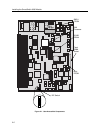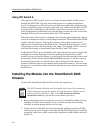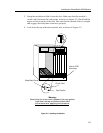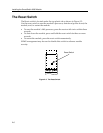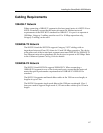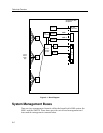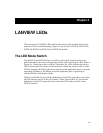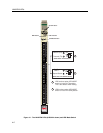
3-1
Chapter 3
Technical Overview
SmartSwitch Architecture
The SmartSwitch Architecture of the 9H532-24, 9H533-24, 9H531-24 and 9H539-24
modules, as shown in Figure 3-1, are conÞgurable for one of two modes of
operation: traditional IEEE 802.1 switching, or SecureFast switching. The modules
support only one of these modes of operation at any one time.
When operating in traditional IEEE 802.1 switch mode, the 9H532-24, 9H533-24,
9H531-24 and 9H539-24 make Þltering/forwarding decisions based on
Destination Address (DA), with standard IEEE 802.1D learning. 802.1Q VLANs
are also supported.
Spanning tree operation for the 9H532-24, 9H533-24, 9H531-24 and 9H539-24 may
be conÞgured to adhere to IEEE 802.1D, DEC, or none. The default Spanning Tree
Algorithm is 802.1D.
When operating in SecureFast switch mode, all Þltering/forwarding decisions are
made on a DA-SA pair and its in and out port on a connection-orientated basis.
SecureFast switching mode provides value-added network services including
dynamic VLANs, Topology, Connectivity, IP Multicast, Control, Security,
Application, Address Management, Dynamic Mapping, and Directory services.
For example, Topology Services includes conÞgurable options ranging from
simple spanning tree implementations to fully-meshed active topologies. Other
services and features supported in SecureFast switching mode are described in
detail in the Cabletron SystemÕs White Paper, IP Host Communication in
Bridged, Routed and SecureFast Networks.




